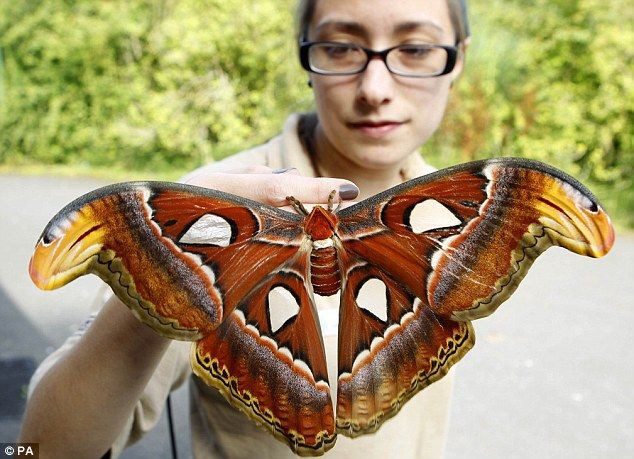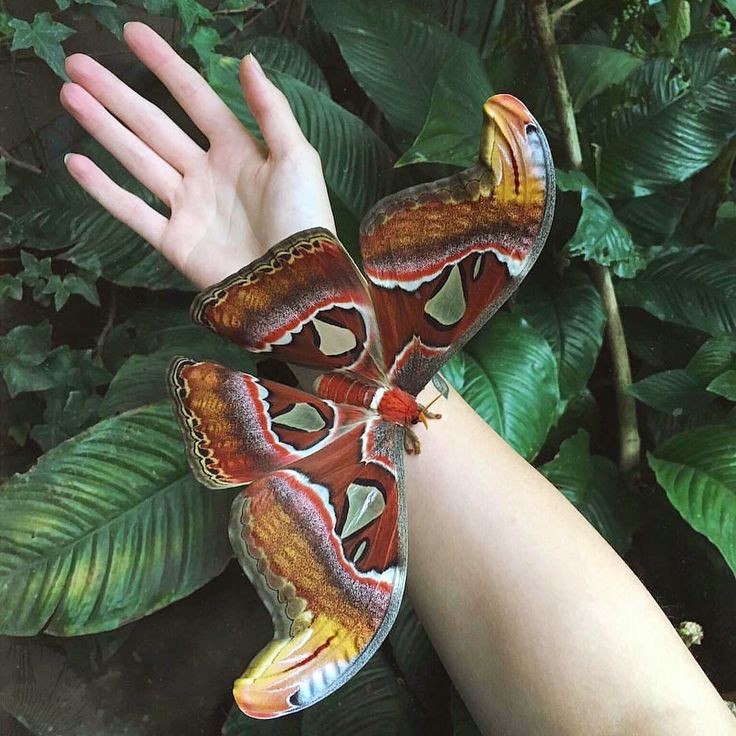
The atlas moth is one of the largest moth species in the world. Its massive wingspan is wider than a human hand. Found in tropical and forest habitats throughout Asia, the atlas moth has reddish-brown wings with triangular patterns outlined in black. This extraordinary moth also lacks the ability to eat and has an incredibly short lifespan.
Life as an Atlas moth
As a caterpillar, the atlas moth is also quite impressive. The larvae feed constantly, storing up for the pupal and adult stages. With a wingspan of up to 12 inches and a total surface area of as much as 62 square inches, it is second only to the white witch moth in wingspan and the Hercules moth in total wing surface area.
Larvae
Atlas moth caterpillars are also impressive in their defense strategies. They have a threatening appearance—the caterpillars are a bluish-green color with spiny protuberances and a white waxy coating. The larvae have a secretion that they can spray a distance of nearly 12 inches that has a powerful odor and can be used against predators like ants and lizards. They can also spray an "irritant secretion" into the eyes of threatening birds from up to 20 inches away.
Adult atlas moths don't eat because they don't even have fully formed mouths. Their proboscis is tiny and non-functioning. Though it seems extraordinary, this is fairly common in moths. They live on the reserves they store as caterpillars. Once the atlas moth emerges from the cocoon as an adult, its sole purpose is to find a mate. The moth doesn’t travel far from its cocoon, saving all of its energy for reproduction.

The atlas moth has what appears to be a built-in method for scaring off predators; its wingtips look just like cobra snake heads. When the atlas moth is threatened, it slowly moves its wings to mimic a snake to ward off potential attackers. Since cobras are found in the same areas as the atlas moth, and because its main predators, birds and lizards, are visual hunters, it seems likely that this wing marking is an adaptation for survival.
If the snake markings are not sufficient to keep predators at bay, the atlas moth also has the appearance of false eyes on its wings. These eyes can startle predators, but also distract them from more vulnerable parts of the moth's body, possibly sparing it from death if attacked.
The Atlas moth has been able to survive for millenniums with their amazing adaptation to be able to reproduce within the short span of time they have as adults. So whenever you see a moth, leave this beautiful creatures be so that they can comfortable enjoy the few moments they have.
Disclaimer
sources of this research were gotten from google and the photos from Pinterest.

Wao beautiful pictures, I have never seen this size of moth, Thanks for sharing.
You're welcome
We appreciate your work and your post has been manually curated by zoology team (oscurity,nelinoeva) on behalf of Amazing Nature Community. Keep up the good work!
amazing!
Thanks, I'll continue the good work.